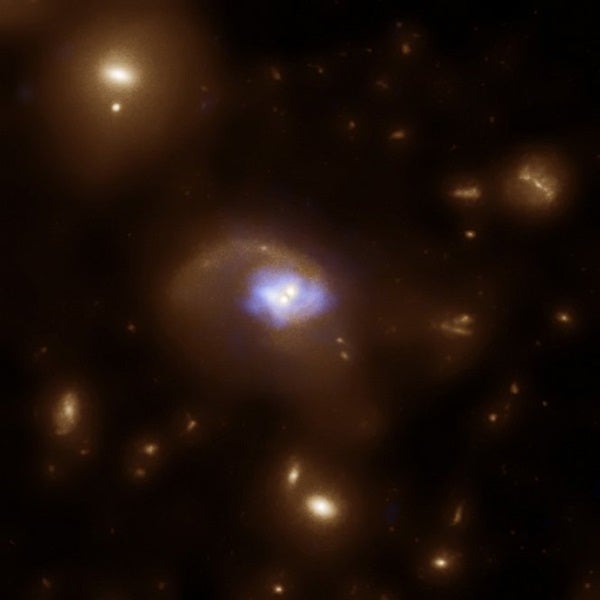But this won’t always be the case. Black holes shine brightly, particularly in X-rays and radio waves, when they devour nearby objects. In this video, a Sun-like star nears a supermassive black hole located in the center of a galaxy. As the star approaches, the black hole’s intense gravity distorts the star. Tidal forces tear off the part of the star closest to the invisible object. This material streams toward the black hole and forms an accretion disk around it while the rest of the star simply dissipates into space. The captured material moves faster and faster, and friction among the atoms heats it to millions of degrees. Meanwhile, magnetic fields channel some of the gas into high-speed jets that escape along the black hole’s rotational axis.
NASA’s Goddard Space Flight Center in Greenbelt, Maryland, created this video to show what happens when a supermassive black hole swallows a normal star. The simulation describes what astronomers think happened in a galaxy located some 3.9 billion light-years from Earth, which burst into X-ray and radio brilliance in 2011. But the same scenario almost certainly has played out in the Milky Way’s core in the past — and will do so again in the future.










